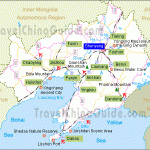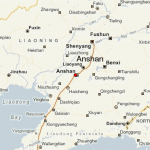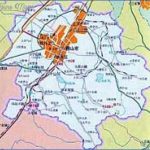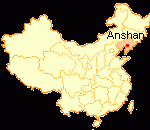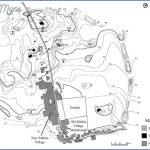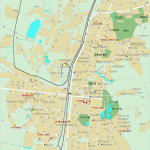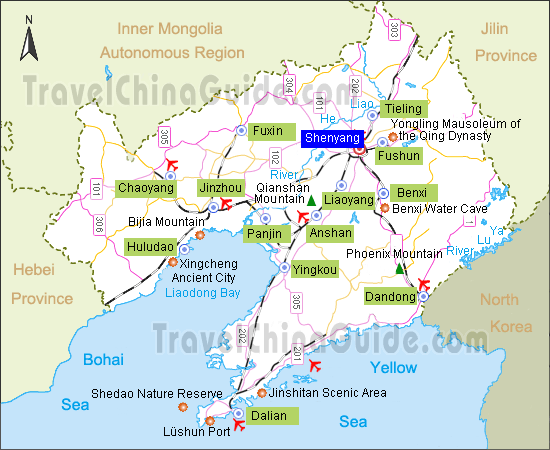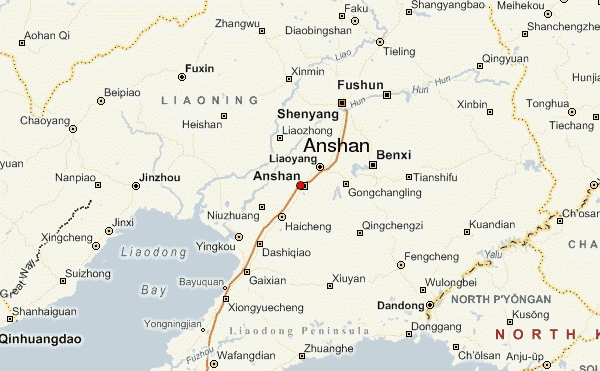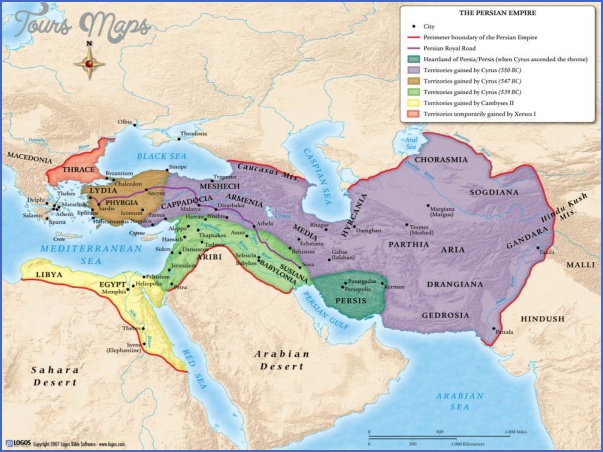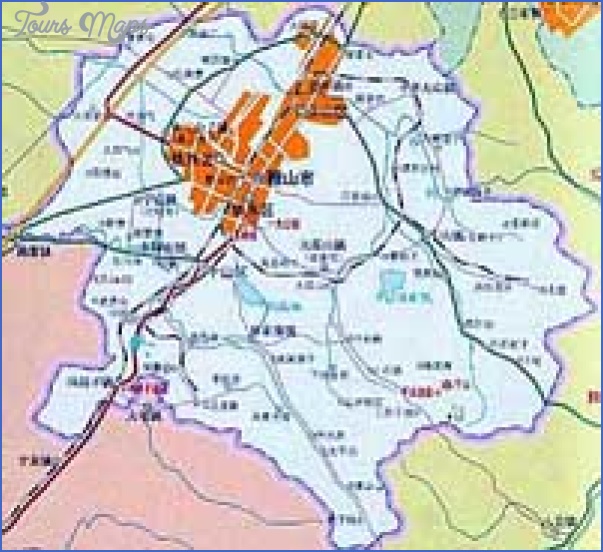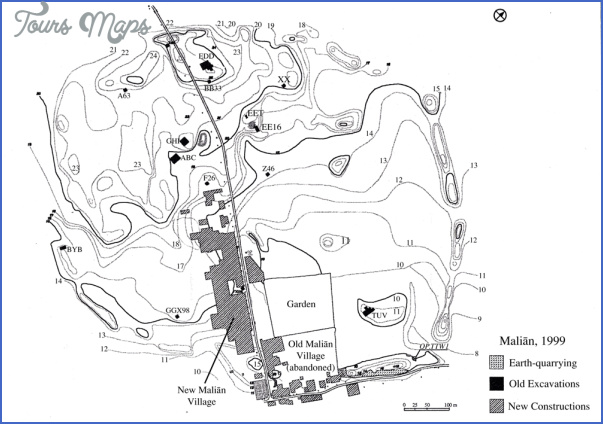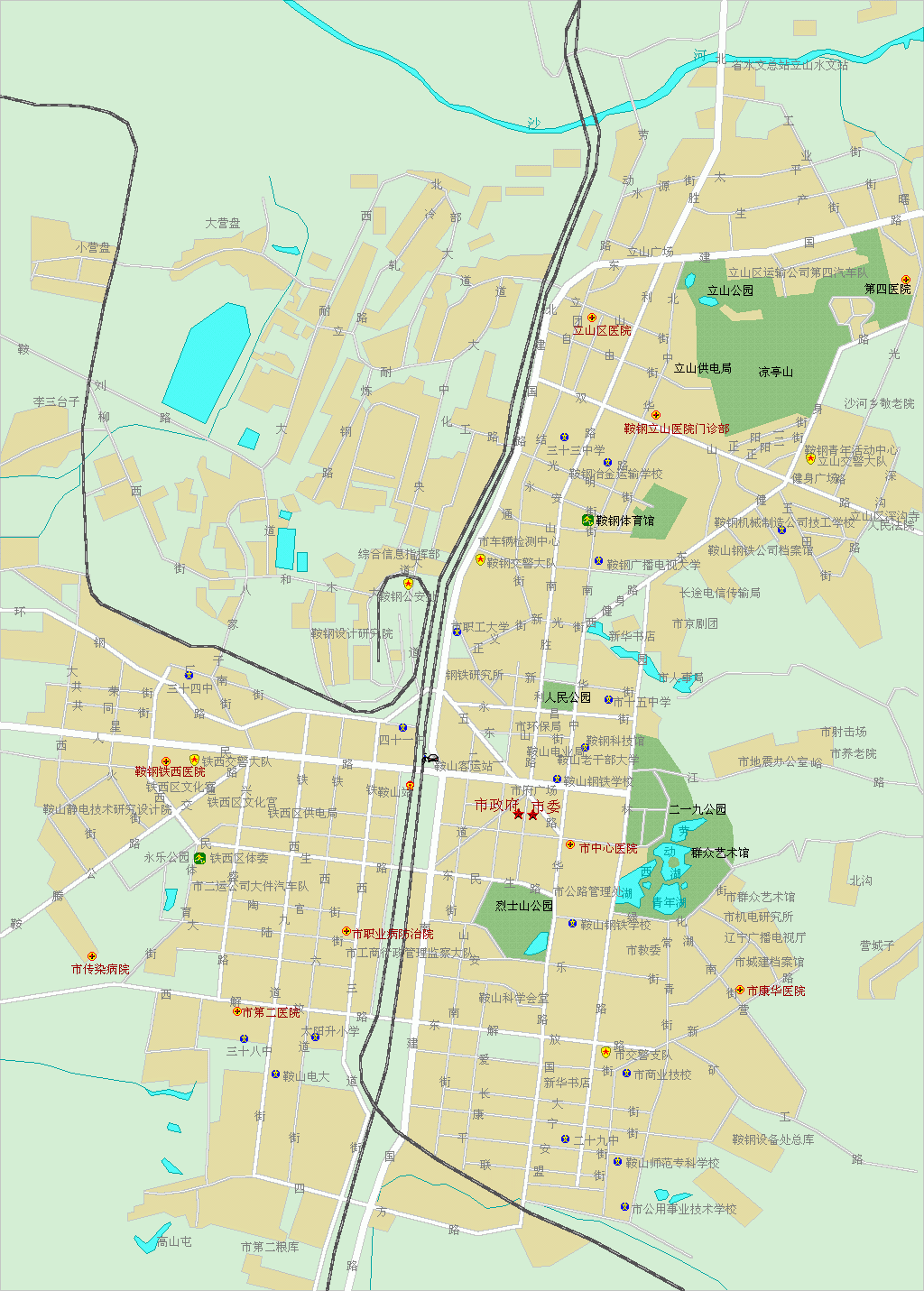Chinese equivalent
Province: Liaoning. Area: 70sq.km/27sq. miles Population: 1,210,000 (conurbation 2,510,000)
Anshan lies at 122°59’E and 41°08’N, in the centre of the north-eastern province of Liaoning, 90km/56 miles south of Shenyang and 300km/186 miles north of Dalian. It is linked to these two towns by rail and motorway. Anshan, the “steel capital of China”, still depends heavily on its iron and steel works, which form one ofthe largest centres of production anywhere in China. Other branches of industry include chemicals, textiles and electronics, as well as agricultural machinery and ceramics. Attempts have been made to improve the appearance of this typical industrial town by the growing of trees and flowers and by general landscaping. Situation and Communications
Anshan can trace its history back to the 2nd century b.c. It is believed that the region’s first local “iron industry” was formed here during the reign of Emperor Han Wudi (140-87 B.C.). Iron smelting flourished during the Tang period (a.d. 618-907). A postal station was set up nearby in 1395. After Anshan had been burned down during the Boxer Rebellion in 1900 and then suffered further serious damage during the Russo-Japanese War (1904-05), the new town was built 10km/6 miles to the north ofthe old, It developed economically following the discovery of fresh iron-ore deposits in the early 20th c. During the Civil War Anshan was occupied alternately by the Guomindang (Kuomintang) and the Communists, until the latter finally took control in 1948. History
Surroundings
This famous mountain massif, 20km/121/2 miles east of the town, is also known as Qianlianshan (Mountain of a Thousand Lotus Blossoms), because its peaks are shaped like lotus flowers. It comprises 999 hills, the highest of which, Xianren Tai (Terrace of the Immortals), is 708m/2324ft. Thousand Hills (Qianshan)
Above the mountain valleys are scattered dozens of Buddhist and Taoist temples, some of which are over 1300 years old, although most date from the Ming period (1368-1644). Some ofthe most beautiful examples from the Tang period (618-907) include the Temple of Great Peace (Da’an Si) and the Great Assembly Hall (Zhonghui Si), both of which lie near Xianren Tai (see above). The monastery of Wuliang Guan in the north-eastern mountain region was founded by a Taoist monk in the second half of the 17th c. Temples and monasteries
Anshan Map Photo Gallery
Maybe You Like Them Too
- The Best Cities To Visit in The World
- World’s 10 Best Places To Visit
- Coolest Countries in the World to Visit
- Travel to Santorini, Greece
- Map of Barbados – Holiday in Barbados

